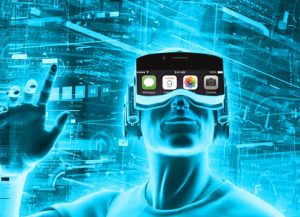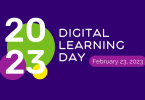
Indeed, knowledge has become easily available and accessible for most people. However, consuming a lot of information doesn’t deliver the same benefits as learning. As technology has made us more adaptive to sitting in one place and learning everything, it is also bound to add dynamics to education.
Tech in classrooms is not new anymore. It’s not uncommon for students to use laptops and tablet computers during lessons. Virtual Reality (VR) seems to be an ideal step forward in the evolution of education. For starters, virtual reality isn’t just limited to games. It can also be useful in the classroom because it showcases different learning styles.
With studies showing that iPads boosted math scores and increased passing rates at different schools, it’s better to embrace its efficiency. But iPads and other tablets are only the beginning. While the technology is still in its infancy, the potential applications are virtually limitless.
- Auditory learners learn by listening, visual learners by seeing, and kinaesthetic learners by touching things and interacting with them. Virtual blends all three.
- Virtual reality tools enable educational publishers to combine audio and video with written text. It also offers the potential for 360-degree views, interactive lessons, and tutorials.
- Exploration within the human body has found a new dimension. VR enhances understanding of anatomy when you can see organs, muscles, and skeletal structures in place and functioning.
Estimations are that by 2020 virtual reality (VR) will start becoming mainstream. And some of the leading players in the education and technology sectors including Google, Microsoft, Facebook, and Samsung are already working on applications for the classroom.
Immersive Learning Experiences
Speaking about early signs of the technology’s potential, we can expect to see truly immersive learning experiences in the future. Here, teachers will be able to bring any subject to life.
For instance, history teachers can take their students into a classic battle scenario. Geography teachers can lead students into remote areas or areas that are inhospitable to human life. Likewise, science teachers could use it while talking about other planets. We’re moving away from ‘learning’ a topic to allowing kids ‘feel’ it, which is exciting. This is because it’s often easier to see and hear something than to have it explained to you. Companies are also working on technology to allow VR users do many things. They will be able to feel the wind, smell the ambiance, and even reach out and interact with virtual objects through actual gadgets. This will take VR from being a promising experiment to a truly immersive experience.
Virtual Field Trips
Virtual field trips have become one of the most promising applications of VR technology for learning. Teachers will be able to construct lesson plans using customizable tools that are developed particularly for that purpose. They’ll be able to use off-the-shelf software from third-party developers who specialize in the education industry. Entire classes will be able to experience virtual and augmented reality as easily as watching a DVD or visiting a computer room.
Many schools have started using Google Expeditions, to transport students to far away and even inaccessible parts of the planet. For example, a VR history class could transport students to Ancient Egypt. And they will be able to see how they lived and learn about their civilization in the utmost detail.
The Google Expedition app is freely available on iOS and Android. Teachers can invest in some of the economical cardboard headsets that can be connected to a smartphone. With these simple headsets, students can actively explore coral reefs or the surface of Mars in an afternoon in the comfort of the classroom. Google will also be offering VR training to teachers, to demonstrate the application of this technology in various ways to enhance literacy.
Distance learning
One of the biggest benefits to students using VR is distance learning. Students are enjoying virtual reality lectures using a VR social application called VR Chat. VR Chat has become an adaptive experience. It enables people to create a virtual world for themselves to live in.
Using VR, distance learning tools can set down educators and students together in the same room with digital representations of themselves. It’s easy to forget that the VR experience isn’t real. And that your mind is tricked into believing that your body is transported into a virtual space.

The advantages of employing virtual reality in education are pretty evident. You have access to more student engagements, quick learning and improved overall quality of education. The depth and range of experiences possible with VR make it an ideal tool for modern students and classrooms.







